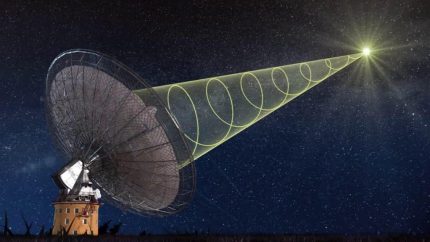Newly Received Signals From Space Leaves Experts Baffled

Earlier this year, a highly publicized report about a possible alien-sent space signal received by a group of Russian researchers took the internet by storm. It reawakened the keen hearts of UFO enthusiasts’ everywhere and even prompted some news shows to feature it. However, the whole thing left everyone disappointed when an explanation regarding its true earthly origin was revealed. But just recently, another more convincing finding was made when a duo of scientists, who were using a gigantic alien-hunting signal-receiving tool in Mexico, captured a series of strong signals coming from a group of 234 stars in the galaxy.
A study, which was published in the Publications of the Astronomical Society of the Pacific, showed that at least 234 out of 2.5 million stars examined by the Sloan Digital Sky Telescope have been sending signals to Earth through the use of light pulses. According to the authors, Astronomers Ermanno F. Borra and Eric Trottier from Laval University in Quebec, the signals they detected perfectly showed a signal behavior that would most likely come from ETs. And that the signals they received mirrored their prediction of the ET signal hypothesis.
Another part of the study showed that the signal only came from a concentrated group of stars out of the millions they have observed, prompting them to conclude that it possibly came from an alien race or races. They also mentioned that an intelligent extraterrestrial life form would probably use something more advanced than a radio signal wave to fully reveal its existence.
However, the study was met with heavy skepticisms. Researchers from SETI, who worked for Stephen Hawkings said that it’s too early to tell whether the signals really have extraterrestrial origins and that further investigations must be done to fully understand where it came from. Even the study authors Borra and Trottier recommended to not get excited right away since their findings would really require further observations and studies.
Leave A Reply
You must be logged in to post a comment.









 Paranormal
Paranormal

